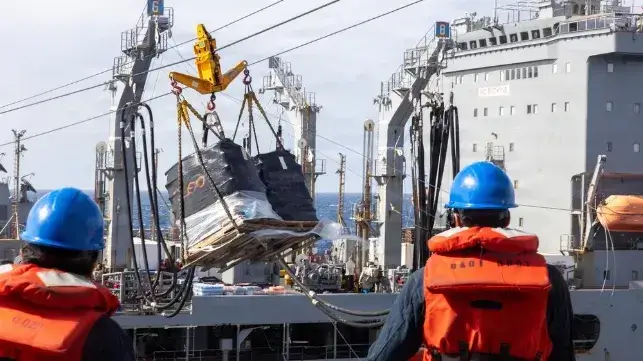America's Maritime Resurgence Requires Rebuilding Human Capital

Tuesday's Senate hearing on "Sea Change: Reviving Commercial Shipbuilding" underscored a truth those of us in the maritime community have long understood: America cannot project power or sustain it without a strong military sealift.
The nation owes a debt of gratitude to Senate Commerce Committee Chairman Ted Cruz and Coast Guard Subcommittee Chairman Dan Sullivan for restoring commercial shipbuilding to the forefront of the Senate's economic and security priorities.
This hearing reflects growing momentum in the Senate. Senators Todd Young and Mark Kelly, through their leadership on advancing the SHIPS for America Act, have placed maritime strength squarely back on the national agenda. Their legislation recognizes that rebuilding U.S. shipyards, vessels, and the skilled industrial workforce is vital to our nation's future. Yet America's maritime resurgence will falter if we fail to rebuild something equally essential: the human foundation—the licensed, militarily obligated Merchant Marine officers who will crew those U.S.-flagged ships in times of war to carry vital supplies through contested waters.
More than 80 percent of the Navy's Strategic Sealift Officers—the mariners who command the commercial and government vessels that would move troops and equipment in a Pacific contingency—come from the U.S. Merchant Marine Academy (USMMA).
These graduates are the backbone of our nation's sealift capability, delivering the armaments, fuel, and supplies necessary for victory in wartime. In any future major-power conflict—particularly across the vast distances of the Indo-Pacific—America's ability to project and sustain power will depend on them.
That's why the SHIPS for America Act's inclusion of the U.S. Merchant Marine Academy Campus Modernization Plan is so critical. The USMMA’s 1940s-era campus is in urgent need of renewal to meet 21st-century security demands. A modernized Academy will ensure that the next generation of merchant marine officers are trained on par with the technological and operational realities of modern warfare and logistics.
The investment required is modest compared to the cost of maritime weakness: commercial contracts lost to foreign flags, inadequate sealift capacity when crisis strikes, and the strategic vulnerability of a nation that can no longer move its own military cargo.
What we saw in the Senate this week showcases government at its best: Congress, the White House and the Department of Transportation all pulling in the same direction to strengthen America's maritime industrial base—and the human base that sustains it.
If the United States is serious about regaining maritime dominance, we must invest not only in the ships and shipyards that define our industrial might, but in the service-obligated midshipmen from the USMMA who will one day command them into contested waters.
The question is not whether to invest in both—it's whether we'll do so before the next crisis demands what we've failed to build. Our future at sea depends on decisive action now.
Captain James F. Tobin is President and CEO of the U.S. Merchant Marine Academy Alumni Association and Foundation.
The opinions expressed herein are the author's and not necessarily those of The Maritime Executive.
